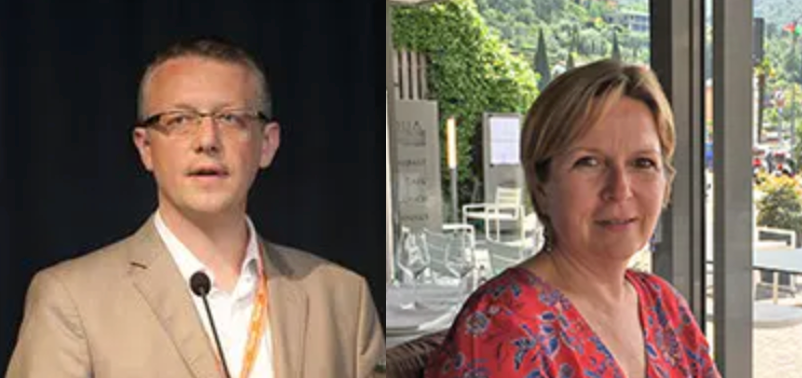Inside the Laboratory: The Chromatography Laboratory at the University of Rouen
Inside the Laboratory is a joint series with LCGC and Spectroscopy, profiling analytical scientists and their research groups at universities all over the world. This series will spotlight the current chromatographic and spectroscopic research their group is conducting, and the importance of their research in analytical chemistry and specific industries. In this edition of “Inside the Laboratory,” Pascal Cardinael and Valérie Agasse of the University of Rouen in Mont‑Saint-Aignan, France, discuss their laboratory’s work with miniaturizing gas chromatography (GC) columns and systems to improve on-site air analysis of volatile organic compounds (VOCs).
The Chromatography Laboratory at the University of Rouen focuses on the miniaturization of chromatographic systems. Pascal Cardinael has managed the chromatography team at the University of Rouen since 2012. The laboratory focuses on the development of new stationary phases and miniaturized columns for gas chromatography (GC). All practical and fundamental aspects of comprehensive two-dimensional GC (2D-GC) are also studied including modulator technology, retention modelling, and coupling with high-resolution mass spectrometry (HRMS).
Valérie Agasse obtained her PhD in electrochemistry from Pierre and Marie Curie University (Paris VI, France) in 1993 before becoming a lecturer at the University of Rouen in 1996. Her research work focuses mainly on the development of stationary phases for liquid chromatography (LC) and gas chromatography (GC) and the development of multidimensional methods for GC. She is also interested in the coupling of ion chromatography with mass spectrometry (IC–MS) for the separation and quantification of polar organic compounds.
Recently, Cardinael and Agasse sat down with LCGC International to talk about their research group and the current research projects they are working on.
Dr. Pascal Cardinael (left) and Dr. Valérie Agasse (right) of the University of Rouen. Photo Credit © Pascal Cardinael and Valérie Agasse.

Can you talk about the analytical techniques that your group used in your most recent research project?
The miniaturization of GC and high-performance liquid chromatography (HPLC) columns and chromatographic systems is the research project that we have recently developed. We initiated numerous partnerships with French and European research teams as well as several chromatographic suppliers. For GC, the performance of elongated pillar micro-columns is particularly interesting not only because of their use as the second-dimension columns of two-dimensional systems, but also for fast analysis because they can separate complex mixtures in less than 35 s. The coupling of these micro-columns with micro-electro-mechanical systems (MEMS) micro-detectors and mass spectrometers is a key point for the future to have efficient and portable chromatographic systems. Our team has also developed new chromatographic supports for HPLC micro-columns that are compatible with micro-electrochemical detectors to develop chromatographic system dedicated to specific applications.
Can you explain the importance of your research within the broader field of analytical chemistry or in a specific industry/application?
For miniaturized GC systems, the applications include on-site air analysis for monitoring and improving indoor air quality as well as online analysis of industrial processes. It is very important to limit people's exposure to volatile organic compounds (VOCs). The simplest way to remove them on-site is efficient room ventilation, but this consumes significant energy. A specific VOC detection system should allow rooms to be ventilated only when necessary. Other applications were the development of miniaturized chromatographic system for space exploration. It is important to know if essential molecules for life are present in the solar system. Reducing weight and energy consumption are crucial to design instruments for smaller space probes. Development of HPLC systems for space exploration is a great challenge. The hyphenation of selective columns to a specific detector could allow the detection of nucleic acids or amino acids at trace levels.
How do you stay updated with advancements in analytical chemistry techniques and technologies?
We are reading reputable scientific analytical chemistry journals of analytical chemistry, and we attend international conferences, symposiums, and workshops where colleagues share their recent research developments. We also follow webinars, blogs, and forums dedicated to analytical chemistry, where experts provide tutorials or reviews on new techniques and technologies.
Can you discuss a recent innovation or development that you find particularly impactful or exciting?
In HPLC, studying the influence of radially thermal exchanges in columns containing ultrafine particles is very interesting. Fabrice Gritti and others (1) presented a quasi-adiabatic thermal environment to maximize resolution power in HPLC. Another amazing innovation is the development of ultra-short columns for therapeutic protein separations, which were studied by our colleagues Szabolcs Fekete and Davy Guillarme (2,3).
References
(1) Gritti, F.; Gilar, M.; Jarrell, J. A. Quasi-Adiabatic Vacuum-Based Column Housing for very High-Pressure Liquid Chromatography. J. Chromatogr A. 2016, 1456, 226–234. DOI: 10.1016/j.chroma.2016.06.029.
(2) Fekete, S.; Murisier, A.; Nguyen, J. M.; et al.Use of Ultra-short Columns for Therapeutic Protein Separations, Part 2: Designing the Optimal Column Dimension for Reversed-Phase Liquid Chromatography. Anal. Chem. 2021, 93 (3), 1285–1293. DOI: 10.1021/acs.analchem.0c01720
(3) Fekete, S.; Bobály, B.; Nguyen, J. M.; et al. Use of Ultrashort Columns for Therapeutic Protein Separations. Part 1: Theoretical Considerations and Proof of Concept. Anal. Chem. 2021, 93 (3), 1277–1284. DOI: 10.1021/acs.analchem.0c04082
New Study Reviews Chromatography Methods for Flavonoid Analysis
April 21st 2025Flavonoids are widely used metabolites that carry out various functions in different industries, such as food and cosmetics. Detecting, separating, and quantifying them in fruit species can be a complicated process.

.png&w=3840&q=75)

.png&w=3840&q=75)



.png&w=3840&q=75)



.png&w=3840&q=75)


